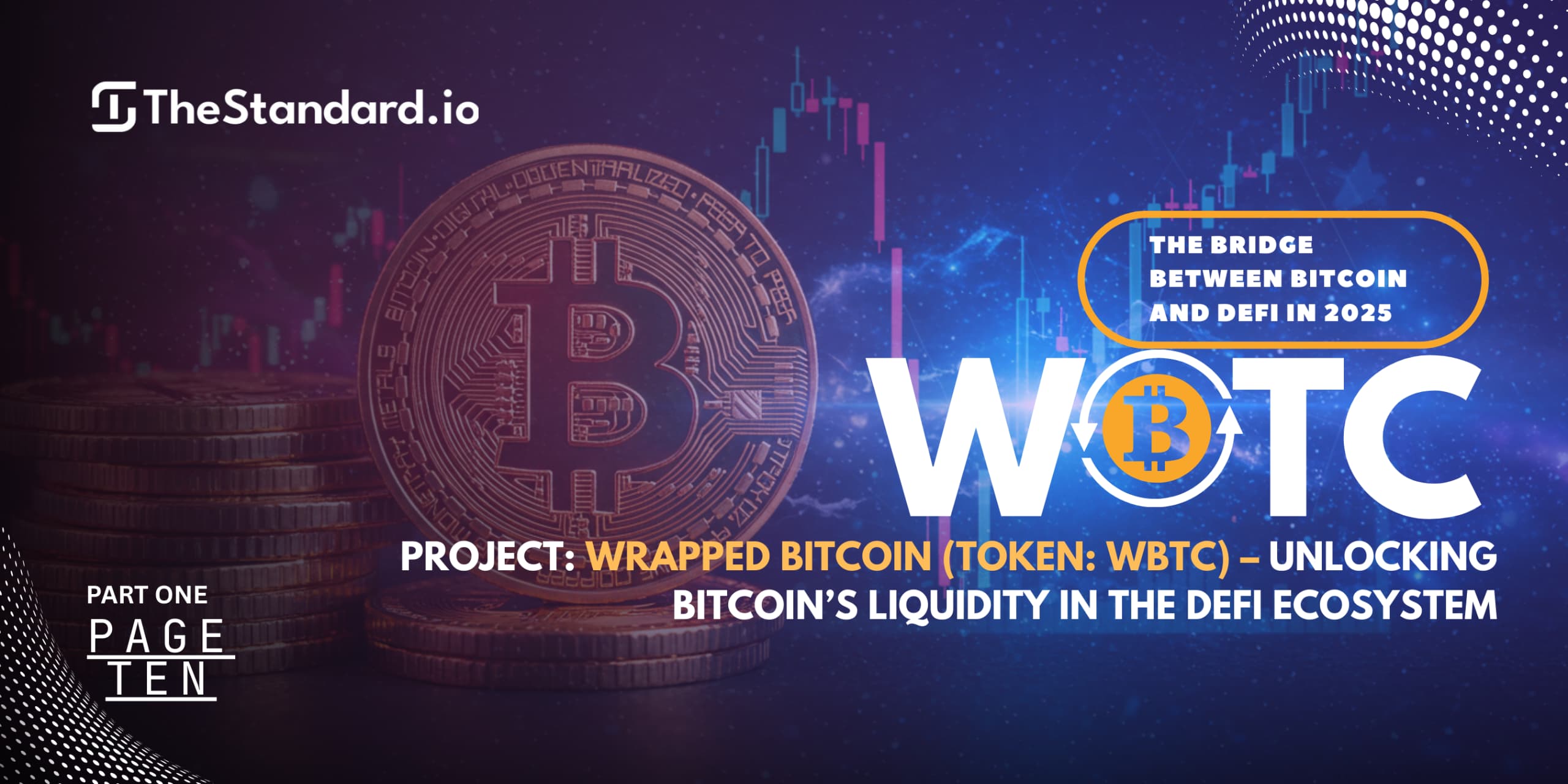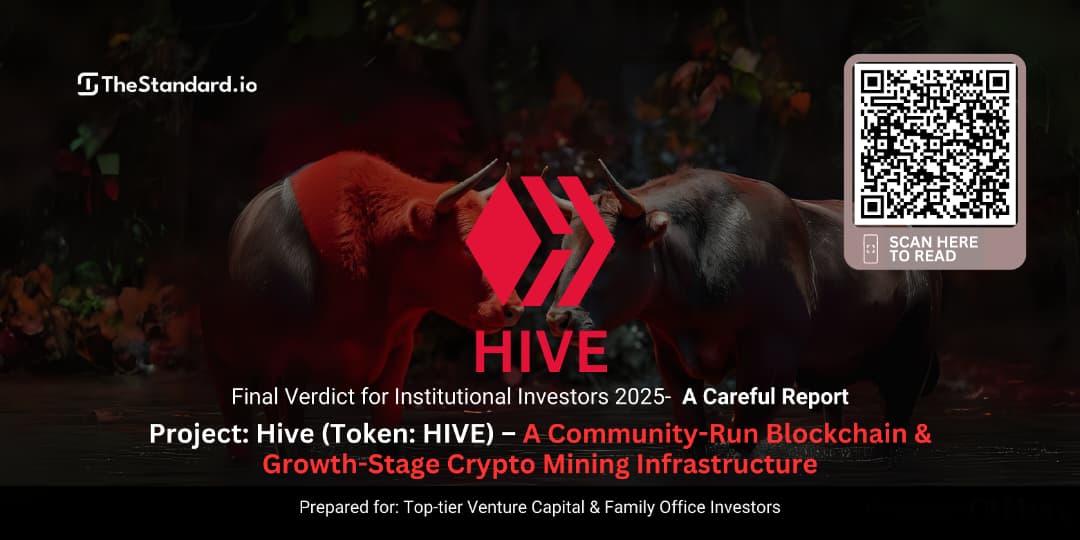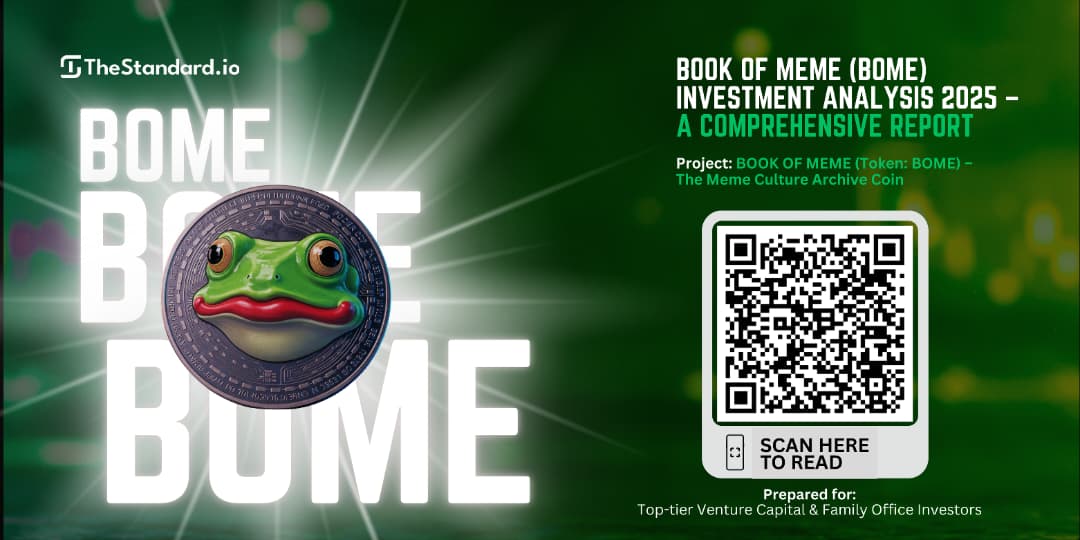Wrapped Bitcoin (WBTC): The Bridge Between Bitcoin and DeFi in 2025

Part 1 / Page 10
2H. Conclusion
Summary of Key Insights
Wrapped Bitcoin (WBTC) has emerged as a groundbreaking project in the decentralized finance (DeFi) ecosystem, allowing Bitcoin holders to participate in Ethereum-based applications without losing exposure to Bitcoin’s price movements. The team behind WBTC—comprising BitGo, Kyber Network, and Ren Protocol—has played a pivotal role in making this vision a reality.
The team has been instrumental in overcoming numerous challenges, including ensuring the centralized custody of Bitcoin reserves, the technical integration of WBTC with Ethereum-based platforms, and the regulatory compliance necessary for institutional adoption. They have also succeeded in integrating WBTC into major DeFi protocols like Aave, Compound, and Uniswap, which has led to the token’s widespread adoption.
Team Strengths:
- Strong Leadership from BitGo, Kyber, and Ren Protocol:
The leadership from BitGo (custodian), Kyber Network (liquidity provider), and Ren Protocol (cross-chain interoperability) has been crucial to WBTC’s development. These organizations bring a wealth of experience in blockchain security, DeFi, and cryptocurrency custody, ensuring that WBTC operates efficiently and securely. Mike Belshe (BitGo), Loi Luu (Kyber Network), and Taiyang Zhang (Ren Protocol) have provided exceptional leadership, driving innovation and fostering strategic partnerships within the DeFi space. - Successful Governance Structure:
The governance of WBTC has successfully balanced centralized security (via BitGo’s custodianship) and decentralized decision-making (via the WBTC DAO). This governance model allows for community involvement while ensuring security and regulatory compliance. The decision to include multiple stakeholders in the governance process has been a major strength, fostering collaboration and transparency. - Expansion into Multi-Chain Ecosystems:
The recent move to expand WBTC into Avalanche and BNB Chain through LayerZero’s multi-chain infrastructure is another significant strength. This decision positions WBTC to capture more liquidity across different blockchain ecosystems, ensuring its relevance as the DeFi market expands beyond Ethereum. The expansion into other blockchains increases WBTC’s accessibility and liquidity, cementing its position as the leading Bitcoin-backed token in DeFi.
Weaknesses and Risks:
- Centralized Custodianship Risk:
One of the primary risks associated with WBTC is its centralized custodianship model. Although BitGo is a trusted and regulated custodian, the fact that WBTC relies on a single entity to manage Bitcoin reserves introduces potential risks. Any issues related to BitGo’s operations, such as security breaches, regulatory challenges, or technical failures, could affect the trustworthiness of the WBTC token. While the project has addressed these concerns through regular audits and proof-of-reserve transparency, centralization remains a point of contention for some in the cryptocurrency community. - Scalability and Gas Fees on Ethereum:
As Ethereum continues to face scalability challenges, gas fees have been a notable issue for users of WBTC, particularly when network congestion is high. Though Ethereum 2.0 and Layer 2 solutions are expected to resolve many of these issues, WBTC’s performance is still tied to Ethereum’s scalability improvements. The team’s decision to integrate WBTC into Layer 2 solutions such as Polygon, Arbitrum, and Optimism has helped mitigate some of these concerns, but the overall network congestion on Ethereum could still hinder the broader adoption of WBTC in the future. - Regulatory Uncertainty:
Regulatory concerns surrounding cryptocurrency and DeFi are a potential risk for WBTC, especially as the regulatory landscape continues to evolve. WBTC’s reliance on BitGo as the custodian may expose it to legal scrutiny in jurisdictions where Bitcoin-backed tokens face regulatory hurdles. The project has actively worked with regulatory advisors and compliance experts, but any unforeseen regulatory changes could impact WBTC’s operations or the way it interacts with institutional investors and DeFi protocols.
Opportunities for Improvement:
- Decentralizing Custodianship:
While the custodial model has worked well for WBTC so far, the team could explore the possibility of decentralizing the custodianship to align more closely with blockchain’s decentralization ethos. The decentralized custody model would allow multiple entities to manage the Bitcoin reserves, reducing the risk associated with relying on a single centralized custodian. Developing decentralized solutions for Bitcoin custody could further enhance WBTC’s appeal, especially among users who value decentralization. - Expanding Governance Participation:
While the current governance model includes a variety of stakeholders, there could be room to expand community participation in decision-making. Ensuring that a broader set of WBTC holders can participate in governance (e.g., via decentralized voting mechanisms) would enhance the token’s community-driven nature. This could be achieved by incorporating more user-friendly tools for participation and voting within the DAO structure. - Exploring New Use Cases for WBTC:
WBTC is currently used primarily within DeFi protocols, but its integration into other blockchain applications could provide new opportunities for growth. For example, WBTC could be used in NFT markets, real estate tokenization, or cross-border payments as more blockchain ecosystems adopt tokenized assets. By exploring these new use cases, the WBTC team could broaden its scope and increase the token’s utility beyond the DeFi space. - Institutional Partnerships and Products:
Another opportunity for WBTC is the development of institutional-grade financial products. As institutional interest in DeFi continues to rise, WBTC could be used as the basis for more advanced financial products such as Bitcoin-backed exchange-traded funds (ETFs), collateralized lending, or derivative contracts. By fostering partnerships with traditional financial institutions, the team could open new revenue streams and attract a new class of institutional investors.
Final Evaluation:
Wrapped Bitcoin (WBTC) has made significant strides since its launch in 2019, largely due to the leadership of the BitGo, Kyber Network, and Ren Protocol teams. The hybrid governance structure that combines centralized custodianship with decentralized decision-making has allowed WBTC to become a dominant player in the DeFi ecosystem, providing Bitcoin liquidity on Ethereum and beyond.
The project has been highly successful in integrating with major DeFi protocols, securing multi-chain support, and attracting institutional interest. However, there are still several risks to address, including the reliance on centralized custodianship, scalability issues on Ethereum, and the uncertain regulatory environment for cryptocurrency.
The team’s ongoing efforts to expand WBTC’s use cases, decentralize governance, and explore new applications for tokenized Bitcoin will be critical to its long-term success. Additionally, decentralizing the custodianship model and improving community participation in governance could further enhance WBTC’s sustainability and security.
Next is 3A: Technology & Infrastructure
Having completed Section 2H: Conclusion, we will now move to Section 3A: Technology & Infrastructure, where we will examine the technical aspects that power Wrapped Bitcoin (WBTC), including blockchain type, network architecture, consensus mechanism, and the security model.
This concludes Section 2H: Conclusion for Wrapped Bitcoin (WBTC). We’ve summarized the key findings from the previous sections, evaluated the team’s strengths and weaknesses, and highlighted opportunities for growth and improvement. Next, we will explore the technical infrastructure of WBTC in Section 3A: Technology & Infrastructure.
3A. Technology & Infrastructure
Blockchain Type: What Blockchain Does WBTC Use?
Wrapped Bitcoin (WBTC) operates on the Ethereum blockchain, which is the most widely used platform for decentralized applications (dApps) and smart contracts. Ethereum was selected for the project due to its robust and flexible infrastructure, which is optimal for creating ERC-20 tokens—a standard for fungible tokens on the network.
Ethereum was chosen as the foundation for WBTC because it offers several key advantages over other blockchains:
- Smart Contract Capabilities:
Ethereum’s strength lies in its smart contract functionality. This allows developers to create decentralized applications (dApps) that can execute contracts automatically when certain conditions are met. WBTC, as an ERC-20 token, can interact with Ethereum-based protocols, enabling Bitcoin holders to access DeFi services without selling or converting their Bitcoin. Ethereum’s smart contract capabilities also allow for secure and transparent operations, where users can mint or redeem WBTC by locking Bitcoin into BitGo’s custodial wallets, an essential feature for the success of WBTC (Ethereum Foundation). - Widespread Adoption of Ethereum:
Ethereum has been the go-to blockchain for DeFi applications since 2017. Its adoption across many of the leading DeFi protocols, such as MakerDAO, Aave, Compound, and Uniswap, makes it the ideal platform for WBTC. By leveraging Ethereum’s massive ecosystem, WBTC could immediately benefit from these established platforms. This made it easier for WBTC to gain traction in the rapidly expanding DeFi space, as it was already compatible with the tools and services available on Ethereum’s network (Uniswap, MakerDAO, Aave).
Security and Immutability:
Ethereum’s security model, backed by its Proof-of-Work (PoW) and moving to Proof-of-Stake (PoS) with Ethereum 2.0, is designed to ensure that transactions on the network are secure and tamper-proof. WBTC, as an ERC-20 token, inherits this security, ensuring that it benefits from the decentralized and immutable nature of Ethereum’s blockchain. Additionally, Ethereum's large number of validators (especially with the move to PoS) secures WBTC’s minting and redemption process by verifying that Bitcoin-backed tokens are properly handled and not subject to fraud (Ethereum 2.0).
Thank you for taking the time to read this article. We invite you to explore more content on our blog for additional insights and information.
https://www.thestandard.io/blog
"If you have any comments, questions, or suggestions, please do not hesitate to reach out to us at [ https://discord.gg/K72hed6FRE ]. We appreciate your feedback and look forward to hearing from you."
CLICK HERE TO CONTINUE
PART 1 / PAGE 11: www.thestandard.io/blog/wrapped-bitcoin-wbtc-the-bridge-between-bitcoin-and-defi-in-2025-11
6 of the best crypto wallets out there
Vulputate adipiscing in lacus dignissim aliquet sit viverra sed etiam risus nascetur libero ornare non scelerisque est eu faucibus est pretium commodo quisque facilisi dolor enim egestas vel gravida condimentum congue ultricies venenatis aliquet sit.
- Id at nisl nisl in massa ornare tempus purus pretium ullamcorper cursus
- Arcu ac eu lacus ut porttitor egesta pulvinar litum suspendisse turpis commodo
- Dignissim hendrerit sit sollicitudin nam iaculis quis ac malesuada pretium in
- Sed elementum at at ultricies pellentesque scelerisque elit non eleifend
How to choose the right wallet for your cryptos?
Aliquet sit viverra sed etiam risus nascetur libero ornare non scelerisque est eu faucibus est pretium commodo quisque facilisi dolor enim egestas vel gravida condimentum congue ultricies venenatis aliquet sit quisque quis nibh consequat.

How to ensure the wallet you’re choosing is actually secure?
Integer in id netus magnis facilisis pretium aliquet posuere ipsum arcu viverra et id congue risus ullamcorper eu morbi proin tincidunt blandit tellus in interdum mauris vel ipsum et purus urna gravida bibendum dis senectus eu facilisis pellentesque.
What is the difference from an online wallet vs. a cold wallet?
Integer in id netus magnis facilisis pretium aliquet posuere ipsum arcu viverra et id congue risus ullamcorper eu morbi proin tincidunt blandit tellus in interdum mauris vel ipsum et purus urna gravida bibendum dis senectus eu facilisis pellentesque diam et magna parturient sed. Ultricies blandit a urna eu volutpat morbi lacus.
- At at tincidunt eget sagittis cursus vel dictum amet tortor id elementum
- Mauris aliquet faucibus iaculis dui vitae ullamco
- Gravida mi dolor volutpat et vitae lacus habitasse fames at tempus
- Tellus turpis ut neque amet arcu nunc interdum pretium eu fermentum
“Sed eu suscipit varius vestibulum consectetur ullamcorper tincidunt sagittis bibendum id at ut ornare”
Please share with us what is your favorite wallet using #DeFiShow
Tellus a ultrices feugiat morbi massa et ut id viverra egestas sed varius scelerisque risus nunc vitae diam consequat aliquam neque. Odio duis eget faucibus posuere egestas suspendisse id ut tristique cras ullamcorper nulla iaculis condimentum vitae in facilisis id augue sit ipsum faucibus ut eros cras turpis a risus consectetur amet et mi erat sodales non leo.

Subscribe to our newsletter.
Get the latest alpha from us, and the Chainlink build program in an easy-to-read digest with only the best info for the insider.
It's an easy one-click unsub, but I bet you won't; the info is just too good.

Try the future of borrowing today.
Don't wait. It's easy to open a free smart vault
then start earning a yield and borrowing today.
0xf5A27E55C748bCDdBfeA5477CB9Ae924f0f7fd2e
USDs Contract on Arbitrum:
0x2Ea0bE86990E8Dac0D09e4316Bb92086F304622d










